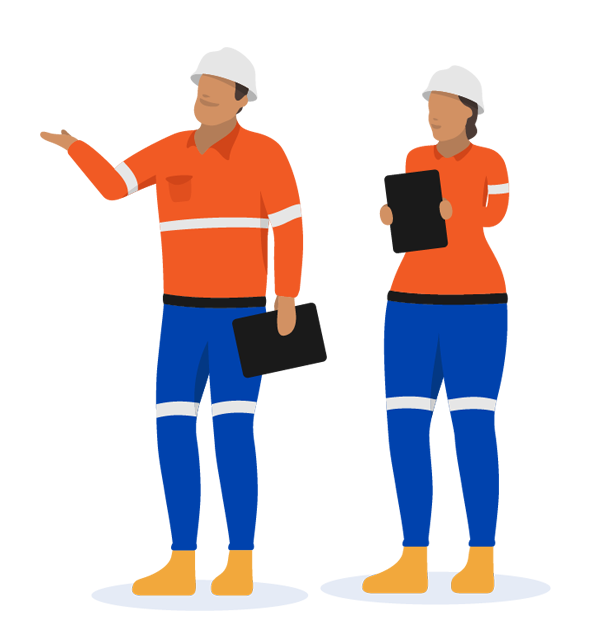

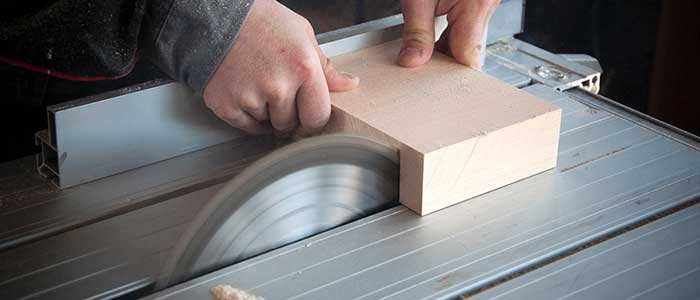
Keep workers performing carpentry work safer, and all of your SWMS for carpentry records more organised using this template.
See the template →
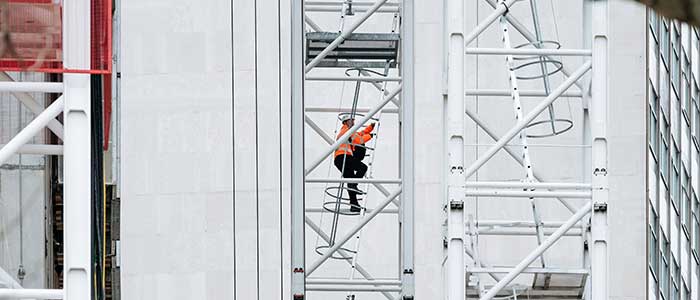
Reduce the likelihood and consequences associated with terrible working at heights incidents by better managing and communicating your SWMS.
See the template →
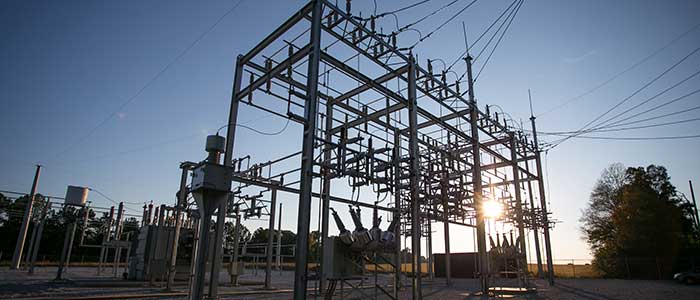
Customise this electrical works SWMS template to suit your own type and approach to electrical works.
See the template →
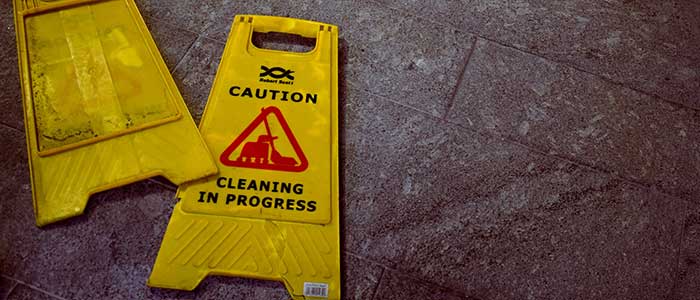
Cleaning might not be the most obvious or urgent candidate for a SWMS, but there are many common and dangerous hazards associated with cleaning.
See the template →
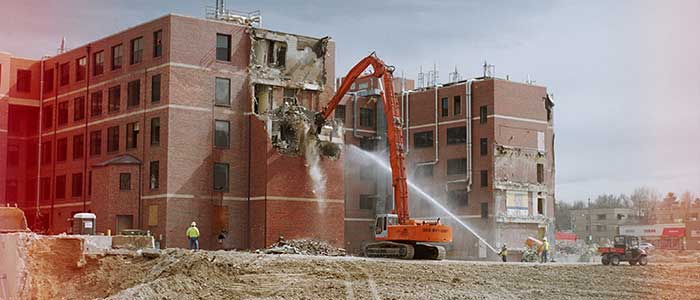
Ensure all workers involved with demolitions understand your work method statement and hazard controls properly using this template.
See the template →

Ensure all of your qualified plumbers are also up to speed on the hazards and control measures in place to make plumbing activities safer.
See the template →

Use this flexible SWMS template to create a safe work method statement for any high risk construction works, and to get some good general ideas.
See the template →
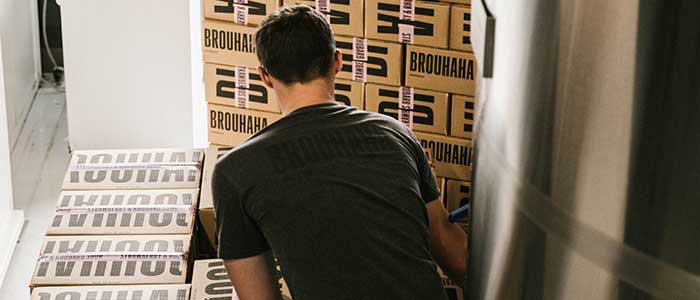
Manual handling injuries and lost productivity is all too common. Ensure better manual handling safety using this SWMS template.
See the template →
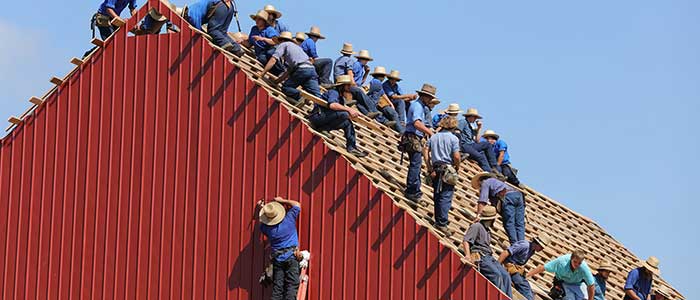
Document and maintain good roofing safety practices and procedures using this flexible roofing safe work method statement.
See the template →

Painting isn't the most obviously dangerous activity on work sites, but having a painting SWMS ensures nothing gets passed you.
See the template →

Concrete cutting (and other cutting) is some of the most dangerous work on any project or site. Improve cutting safety using this cutting SWMS.
See the template →
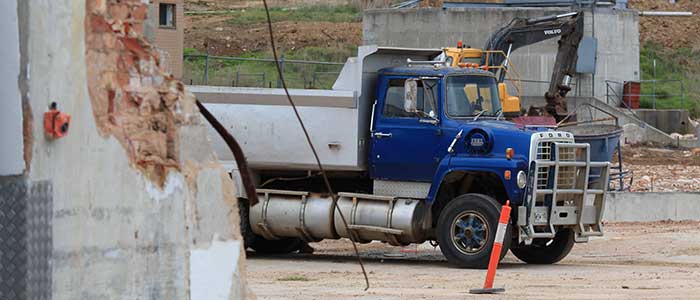
Improve tipper truck driver, operator and all stakeholder safety by using a more accessible and flexible tipper truck SWMS document.
See the template →

Keep all of your bricklayers and masons working to the same high and safe standards by creating, maintaining and sharing a bricklaying SWMS.
See the template →
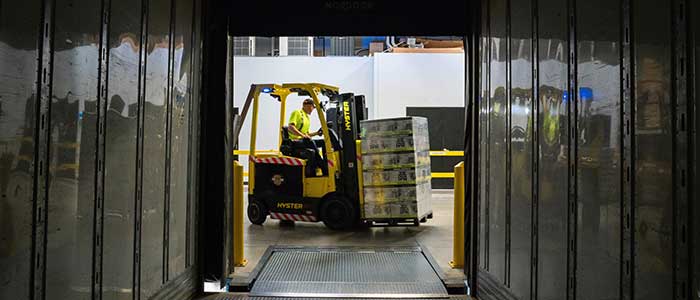
Standardise your documentation and general approach to forlift safety using this template.
See the template →

Asbestos safety is a critical part of any industrial companies arsenal and obligations. Ensure you have your approach 'right' using this template.
See the template →

Keep your skid steer loader operations and operators on the same page at all times using this template.
See the template →

Keep all of your welding operations and all of your welders as safe as possible by maintaining a trusted and reliable source of truth on welding safety.
See the template →

Tree felling and tree removal are some of the most dangerous activities on any site. Keep your tree felling operations as safe as possible with a good SWMS.
See the template →

Solar installation involves a number of hazardous job steps and risks which can be better mitigated when documented and controlled with a SWMS like this.
See the template →
 statement for scissor lifts template" width="1200" height="360" />
statement for scissor lifts template" width="1200" height="360" />
Scissor lifts pose a constant and significant risk to operators and surrounding workers. Improve your scissor lift safety with a reliable SWMS.
See the template →

Improve how hot works are conducted and managed across your workforce and sites by keeping a standardised and trusted SWMS.
See the template →

Excavation and trenching safety is mostly about practivity and good preparation. Bolster yours using this excavation SWMS for yourself.
See the template →

All high risk construction activities require a SWMS, and waterproofing is no different. Use this template to better create or maintain yours.
See the template →

Use this flexible template to create and maintain a SWMS for concreting works, including concrete delivery, slab and more.
See the template →

Ensuring all of your trades (including plasterers) have seen and acknowledged your safe work method statement is crucial to overall site safety.
See the template →

Document, outline and share your confined space safety best practices using this safe work method statement template.
See the template →

Keep all of your landscapers and landscaping operations on the same, safe page using this flexible template.
See the template →

Don't get complacent about ladder safety and the everpresent dangers of working at heights. Ensure everyone is using and working around ladders the right way.
See the template →

No high risk construction activity should be taken for granted. Keep your formwork installations and formwork operations safe and compliant with a good SWMS.
See the template →

Ensure all of your lawn mowing activities are performed safely, and that everyone knows what they are doing using this method statement.
See the template →

Glazing and working with and around glass can pose many hazards for glazers and surrounding workers. Maintain a good SWMS to mitigate these hazards.
See the template →

Ensure everyone is performing air conditioning works (and keeping everyone else safe) by maintaining an air con SWMS like this.
See the template →

Managing a remote workforce across activities like gardening and garden maintenance can be hard. Make it easier with a smarter template.
See the template →

Keep all of your tilers working in the safest and most reliable way possible by maintaining and sharing a trusted tiling SWMS.
See the template →

Ensure your water truck drivers, managers and everyone else is on the same page as to what good water truck operations involve.
See the template →

Poor scaffolding documentation creates additional hazards and can result in grave consequences. Improve your scaffolding safety with a good SWMS.
See the template →

Use this fencing SWMS framework to get a headstart on your own fencing operations work method statement.
See the template →

Cranes are powerful and incredibly valuable pieces of kit on construction and industrial sites. Make sure you take care of them and your people properly.
See the template →

Reduce mobile plant incidents and ensure everyone working on and around mobile plant is doing it safely.
See the template →

Ensure your workers and projects are referencing a good safe work method statement when driving - not bad habits.
See the template →
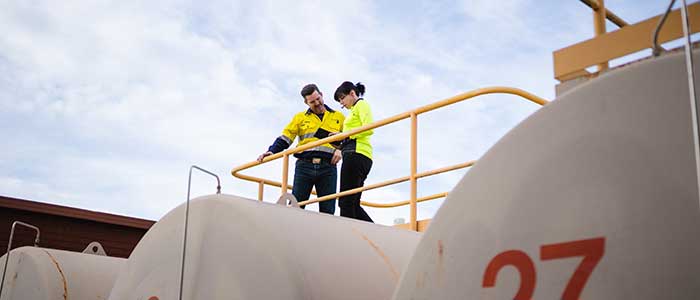
This flexible and generic safe work method statement can be used and adapted for any of your high risk construction activities.
See the template →

Ensure all of your workers and site personnel involved with cladding operations are conducting works the safe way.
See the template →

Get all of your projects off to a good and safe start by ensuring site establishments and building set outs are done safely.
See the template →

This flexible SWMS document can be used and customised for any of your fuelling and re-fuelling operations to ensure everyone is managing fueling safely.
See the template →

Rendering is one of the most common construction activities, and it can also be high risk. Make sure you have your bases covered with this SWMS.
See the template →
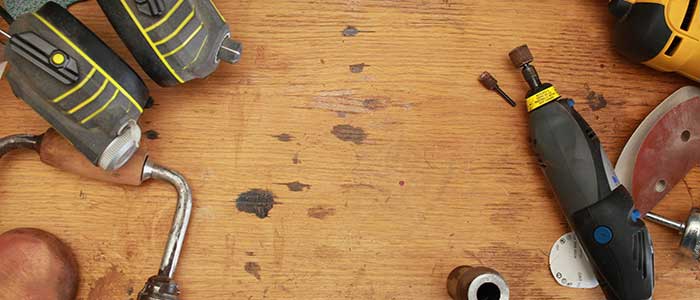
Power tools pose a constant hazard and risk to many workers. Ensure everyone is using and managing power tools properly with a good SWMS.
See the template →

Angle grinders can cause harm to any trade at any time. Keep your operations safe and standardised using this safe work method statement.
See the template →

Rollers need a good safe work method statement too. Use this flexible SWMS to create the right approach to your roller operations.
See the template →

Working from heights + plant and equipment = hazards. Mitigate the chance of safety issues with this template.
See the template →

Chainsaws are dangerous pieces of equipment on any industrial site. Ensure your chainsaw operations are as safe as possible.
See the template →

Hazardous chemicals pose a number of hazards for site workers, the public and all stakeholders. Create strong high level handling practices with this template.
See the template →

Keep all of your asphalting operations as safe as possible for divers, operators and all of your crews using this template.
See the template →

Use and deploy this plasterboard safe work method statement to any of your projects now.
See the template →

This safe work method statement for pressure cleaning makes acknowledging and managing pressure cleaning safety easy for everyone.
See the template →

Maintaining strong plant and equipment SWMS documents enables you to keep bulldozer operators and all site workers safe and productive.
See the template →

Easily create, maintain and share your known best approach to bobcat operations and safety with this template.
See the template →

Often times, getting the fundamentals right is the key to overall site and project safety, all the way down to changing tyres properly.
See the template →

Roof access can pose many hazards and create many safety issues for companies of all sizes. Mitigate the risks with a good SWMS.
See the template →

Pipe laying and normal pipe laying job steps introduce a lot of hazards to workers and sites. Mitigate the chances of failures using a good SWMS.
See the template →

This safe work method statement for drilling can be used and customised for electric, battery operated or large scale drilling operations.
See the template →
All of these safe work method statements are digital documents, meaning they are smarter and more flexible than traditional paper, word, PDF or excel-based SWMS templates.
With cloud-based SWMS templates, you can access, view and sign off on any SWMS from any mobile, tablet or computer. When a change or signature is made to your current SWMS version, it is automatically and instantly updated - meaning as many people as you like can work off the same latest version of the safe work method statement at the same time.
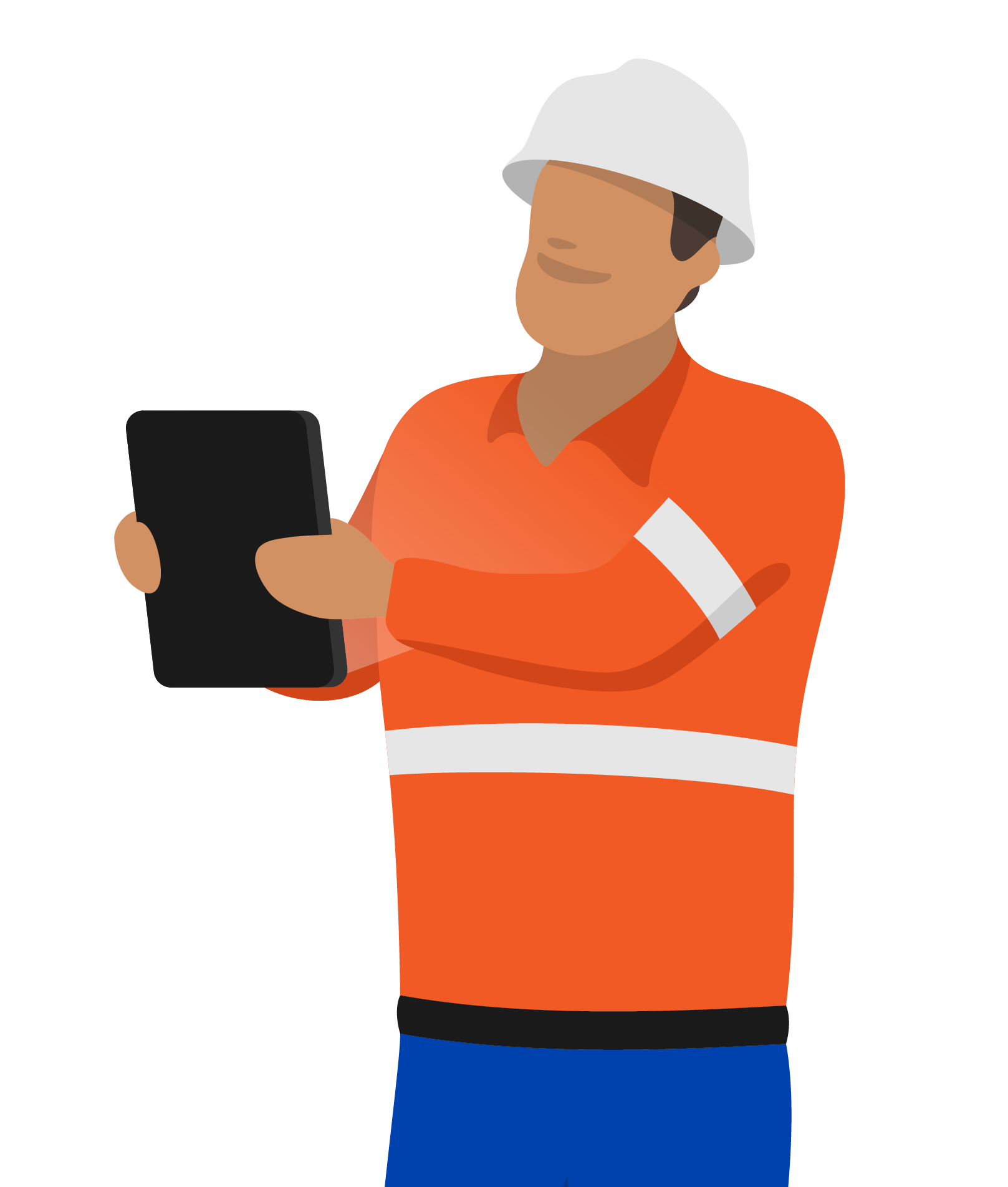
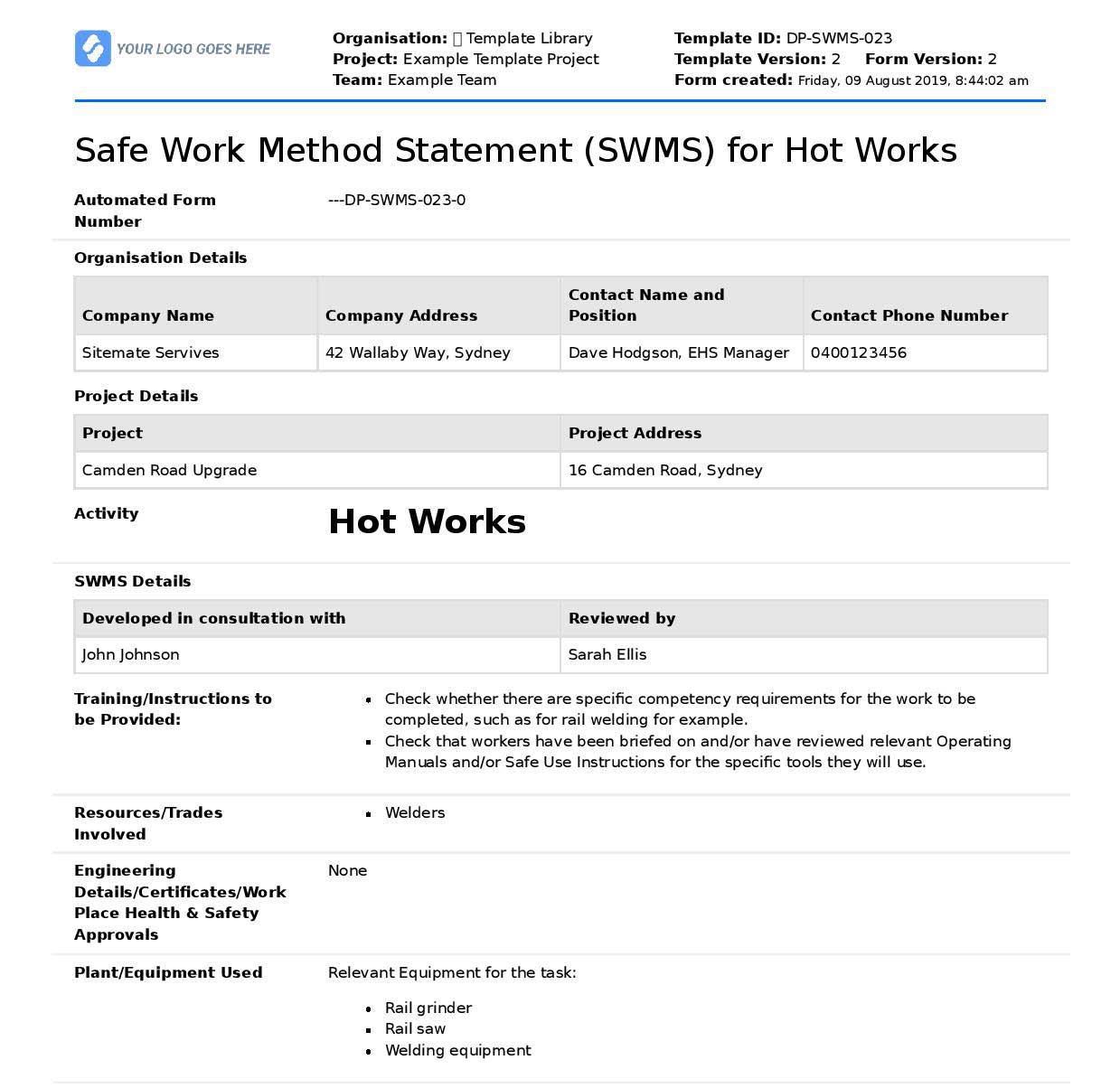
Although it is massively beneficial to have and use digital safe work method statement templates, there are of course times when you still need to be able to print, download or send your SWMS document as a hard copy or more traditional format.
Using these templates, you can generate a PDF or CSV version of any safe work method statement in a single click, and every generated record comes professionally formatted with your company logo and colours.
This eliminates the formatting of documents after they have been created and signed off, and keeps all of your shared records standardised and professional.
You can use one of the above safe work method statement templates, or as many as you like.
Once you select the SWMS you want to get started with, you will also be able to add more activities and operations to your consolidated SWMS library.
All of the SWMS templates stay securely stored online, where you have controls to deploy them to specific projects and teams, version control and audit trail to remain compliant and other tools to make your life easier.
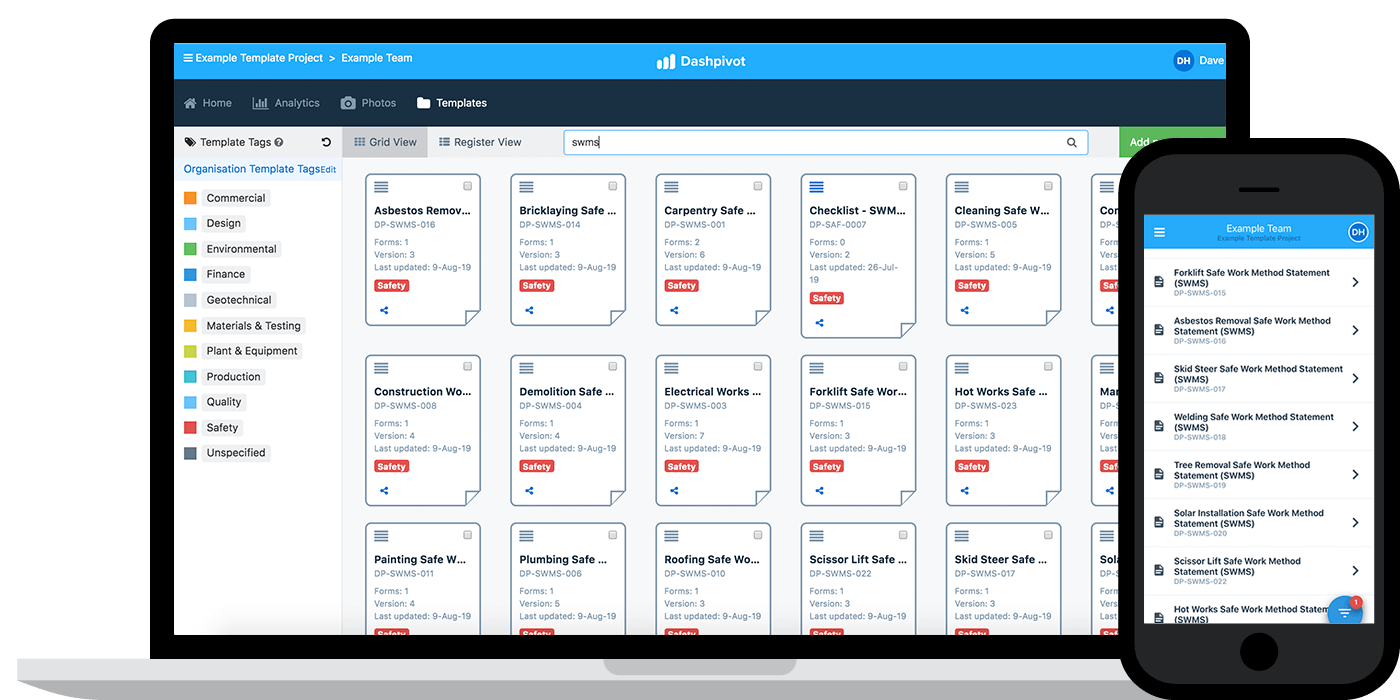
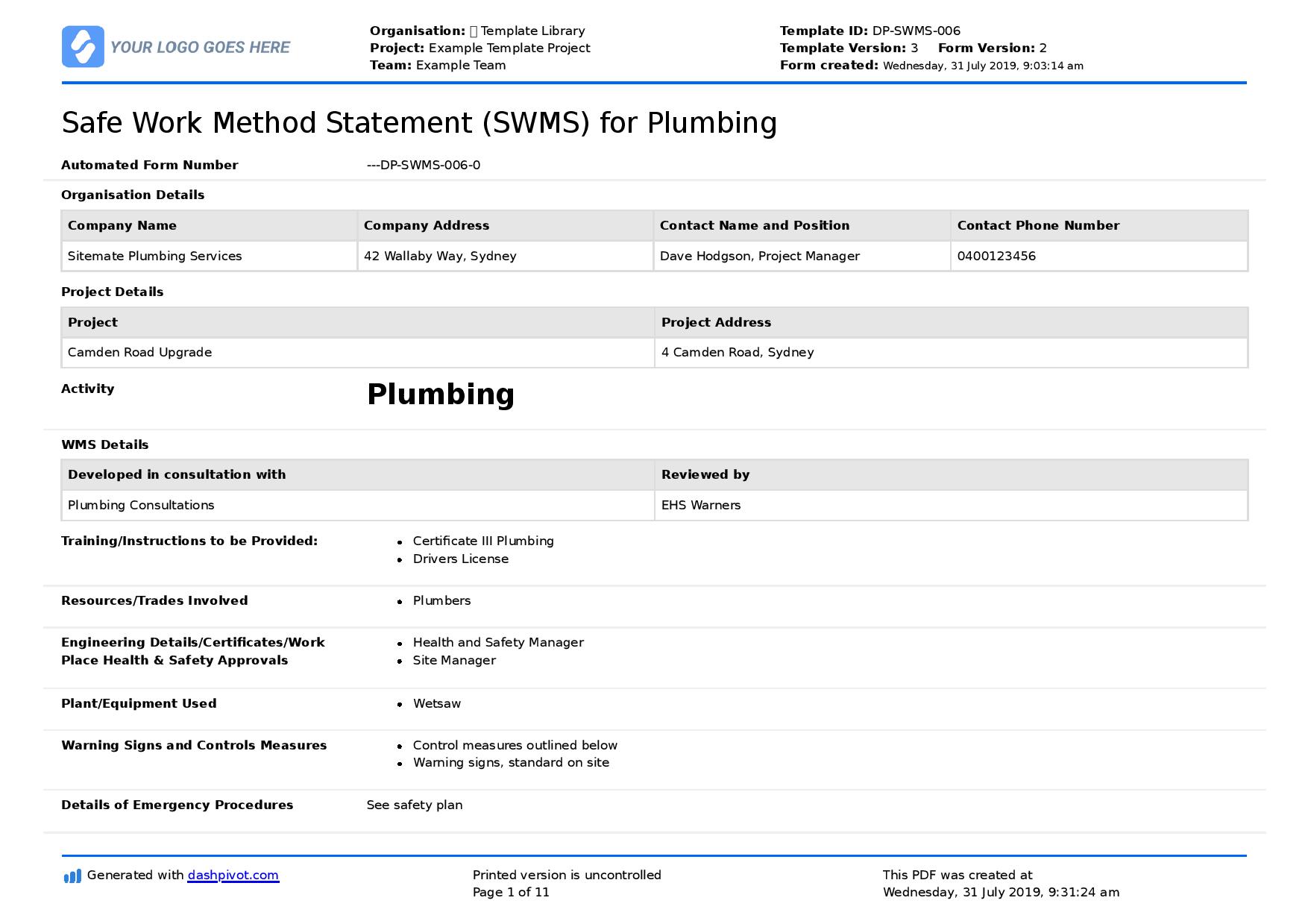
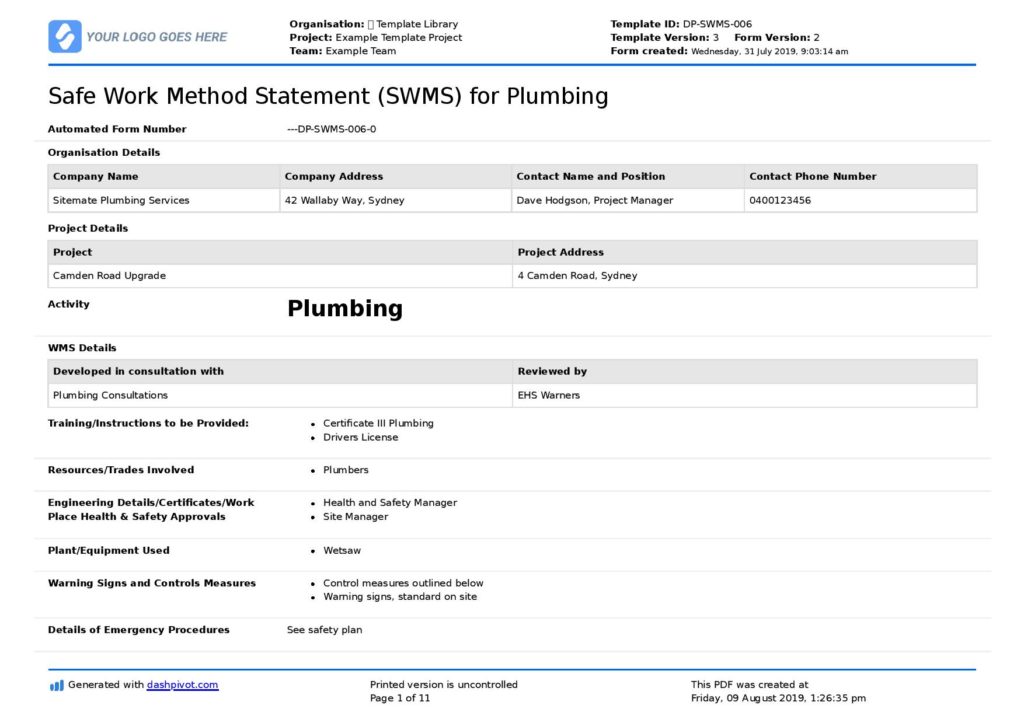
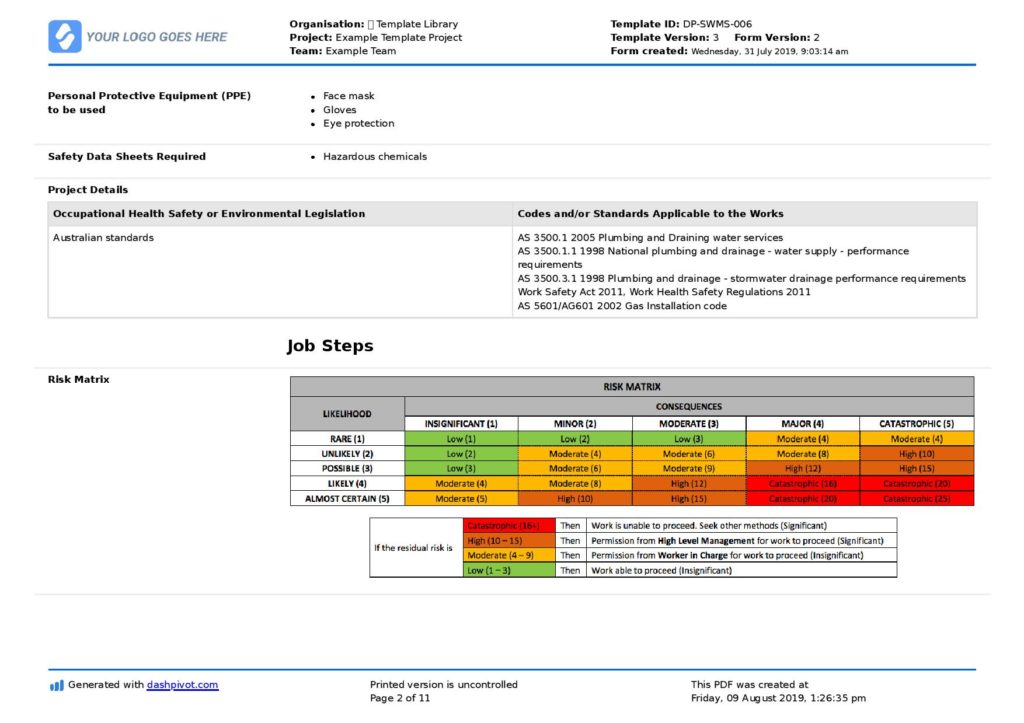
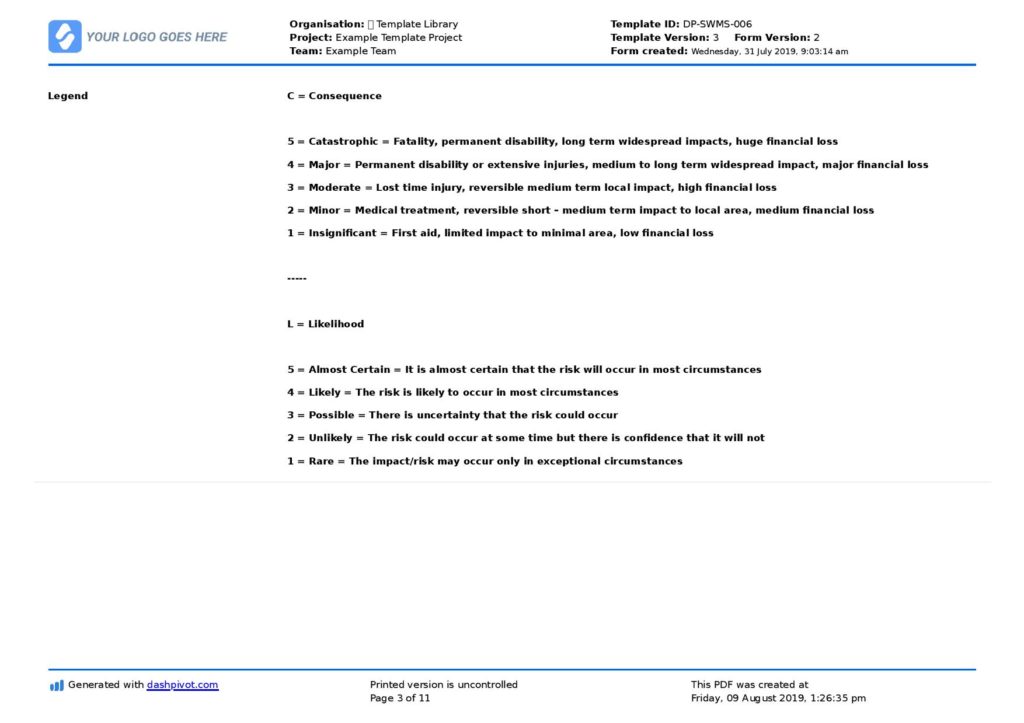




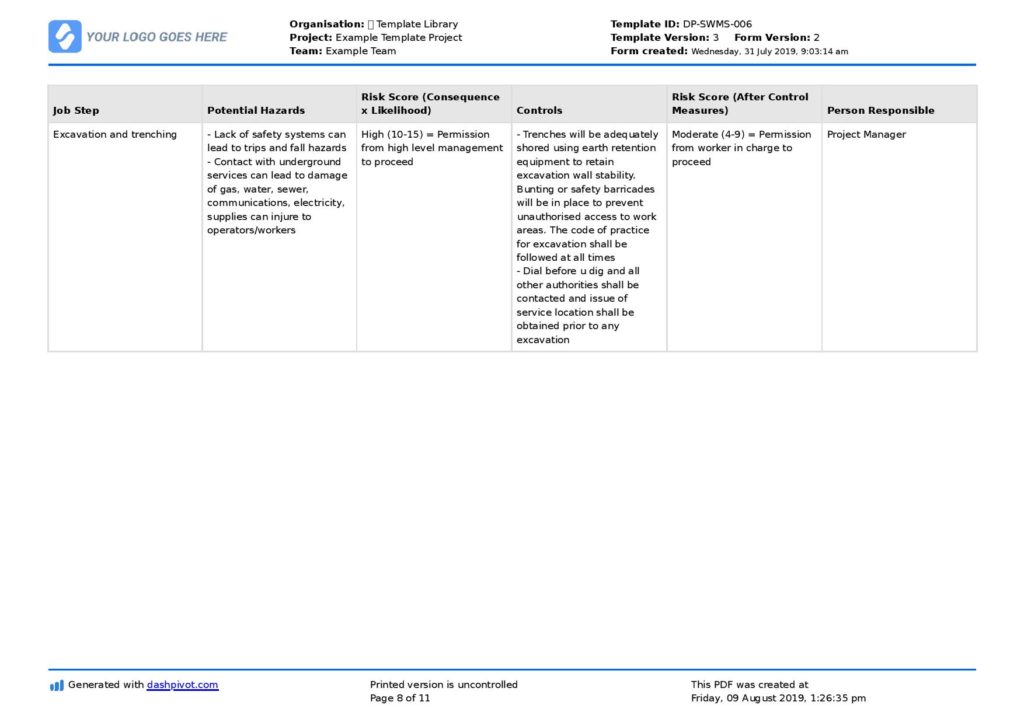

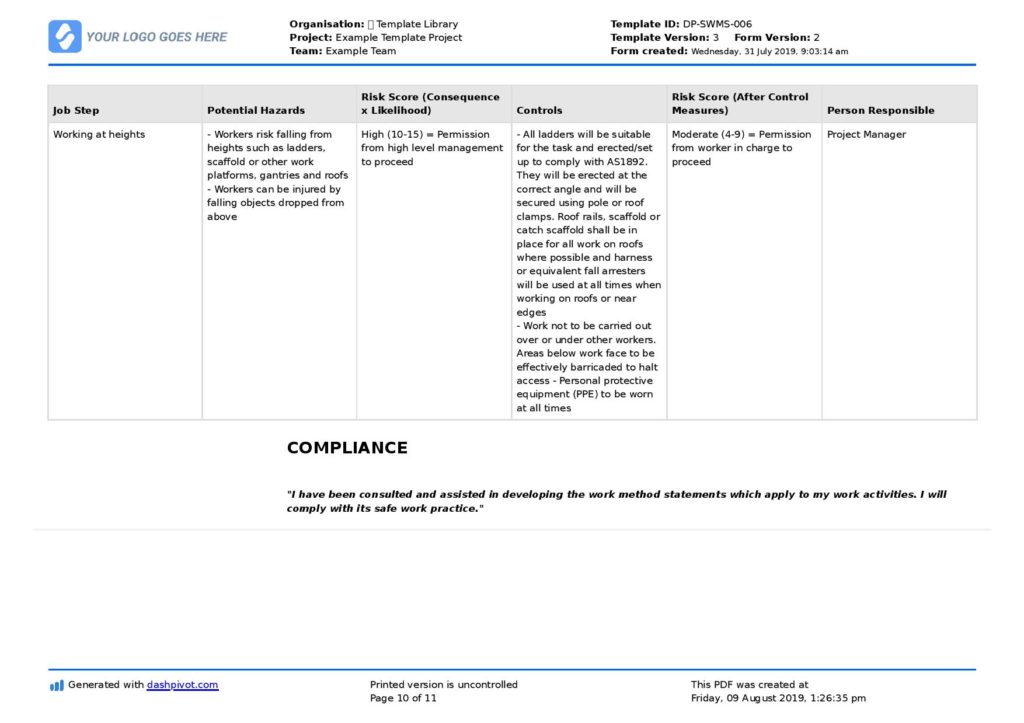
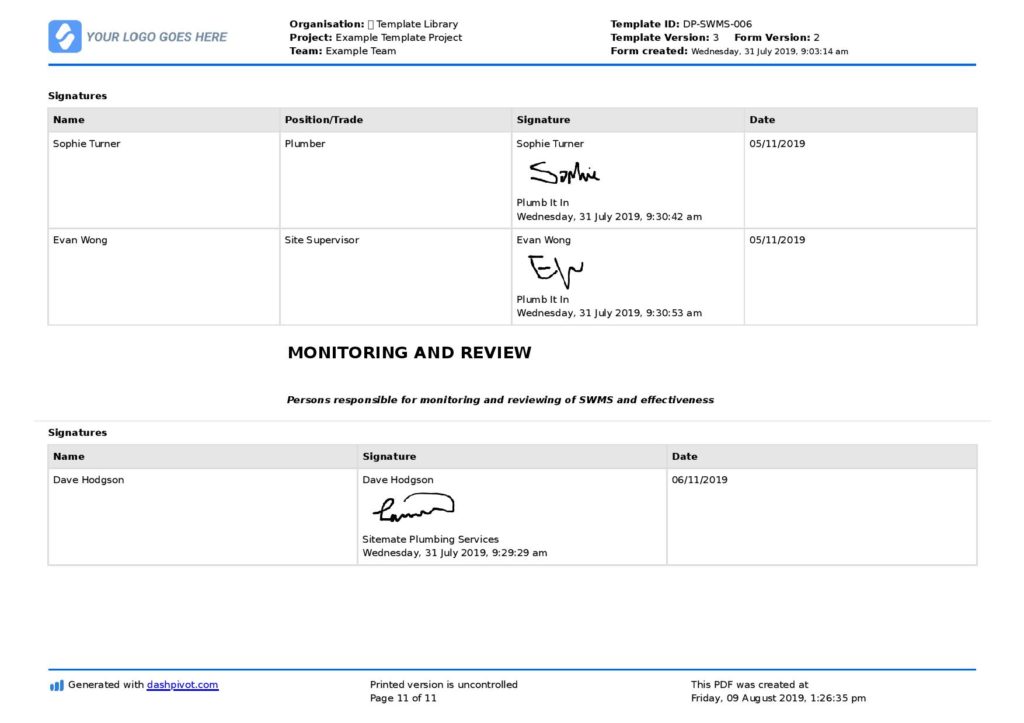
All of the above safe work method statement templates share a similar structure, because there are some objective 'best practices' when it comes to the makeup of any safe work method statement.
You can view the template layout below in graphic format, but here is a general overview of the different sections of the template:
Organisational details - A neat organisational details table at the top of your safe work method statement enables you to stamp all of your important information on each SWMS record, along with the contact person.
Project details - Different companies have different approaches to how often they review and adjust their SWMS, but each project should have a specific SWMS which is created and maintained specifically to cater to that environment, that site, the other parties involved etc. so you'll need to have a place to 'place' your details on a SWMS template.
The activity - You can have the type of high risk activity the SWMS was created for at the top of the document, but it's usually helpful to have it in at least one other place to clarify and add detail to the activity. For example, maybe the safe work method statement is for working at heights, but maybe it's for a specific type of working at heights which you could further denote in this section of the template.
Some other SWMS details - Including the parties or people who helped develop and review this safe work method statement can be really important. If there are issues later down the track or if something was missed or non-compliant, it helps to be able to look back and understand who worked on what and why.
Training and instructions to be provided - The core of a safe work method statement is the job steps of that specific high risk construction activity, but outlining the other core safety practices, procedures and rules behind these operations is crucial too. For most high risk construction activities, people require a certain level of training. It's in this section of the SWMS template that you can document the required level of training which everyone who participates in this work requires. For specific trade safe work method statements, this might include a trade license, and for more general tasks, this might include a specific induction or training session on that activity.
Resources trades involved - Safe work method statements are intended to be quite specific, and they are also typically applicable (or more applicable) to certain trades. Defining which trades will be involved in a specific activity is a good way - along with the training provided above - to ensure that everyone performing the activity should be doing so.
Engineering details/certificates/work place health and safety approvals - In some cases and for some specific activities, there might be some engineering requirements, specific certificates or specific approvals required to move forward with a specific task. This is where you would place that information.
Plant and equipment used - Many high risk construction activities involve plant and equipment, which can save time and manual labour but can also introduce their own hazards and dangers. Identifying the plant and equipment which will and should be used for a specific activity benefits the SWMS and SWMS readers in a number of ways: it clarifies which plant and equipment they should use, which plant and equipment they probably shouldn't use, and also serves to remind the person creating the safe work method statement about the hazards and risks associated with the plant and equipment used in accordance with activity.
Warning signs and control measures - Most of the control measures associated with the activity being assessed in the SWMS are outlined in the job steps section, but there may be some general control measures and warning signs in place which are applicable to this activity.
Details of emergency procedures - Most of the time, this section of your safe work method statement template says 'as per the safety plan', because the basic emergency procedure is generally applicable to any emergency which arises from this specific activity.
In some cases, it may be different, in which case this section of the template would allow you to outline specific around the emergency procedure.
Personal protective equipment (PPE) to be used - Personal protective equipment requirements are a staple section on any safe work method statement template - as well as most safety templates. This section of the template gives you a nice spot to point to in the case that someone who has signed off on the SWMS has not adhered to the PPE requirements clearly laid out in the SWMS.
Safety data sheets required - Another common and major source of danger on construction and industrial sites are safety data sheets. Where applicable, you should include details around the safety data sheets or safety data sheet requirements associated with a specific activity.
Legislative and codes/standards - Many of these high risk activities have led to many issues, injuries and fatalities in the past, which has led to the rise of legislation, standards and codes designed specifically for them. Listing the legislations and codes applicable to the activity is important, because it gives everyone a reference point and also shows any reader or auditor that the company was aware of the minimum requirements and it's obligations from a safety standpoint.
Job steps - The main section of any safe work method statement template - and the main contents of all of these SWMS templates is the job steps section. This section enables a company, project or team to outline all of the main steps involved with performing this activity, the hazards associated with each job step and the control measures in place for minimising and mitigating those hazards.
In addition, most safe work method statements will give each job step at least one risk score (which is the likelihood of the risk eventuating multiplied by its consequence), while many provide two scores - one before the control measures are in place and one after the control measures are in place.
This increase the likelihood that the control measures are well thought out and making an impact on safety.
Compliance signatures - The purpose of a safe work method statement is to ensure that everyone who conducts a specific high risk activity is conducting it safely. To 'record' that everyone has been shown the SWMS, people need to sign off and acknowledge that they have read and agreed to conduct work in this manner.
Monitoring and review signatures - Safe work method statements are living and breathing documents, and they need to be monitored for accuracy and reviewed regularly. Like all safety inputs and documents, the power of the document comes from being able to create it, and then measure it, and then improve it.
See a real-world example of the safe work method statement